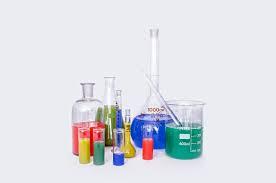Alternate Test Procedures
 The Clean Water Act Alternate Test Procedure (ATP) program is described at 40 CFR 136.4 and 136.5. This program provides a mechanism for submission and review of an application for nationwide use or limited use of an ATP for measurement of a pollutant as an alternative to the methods approved at 40 CFR Part 136. An ATP may fall into one of two categories:
The Clean Water Act Alternate Test Procedure (ATP) program is described at 40 CFR 136.4 and 136.5. This program provides a mechanism for submission and review of an application for nationwide use or limited use of an ATP for measurement of a pollutant as an alternative to the methods approved at 40 CFR Part 136. An ATP may fall into one of two categories:- A method using a determinative technique (e.g., a pollutant detector) different from that in an existing Part 136 method (for method validation and evaluation purposes this type of method is referred to as a new method), or
- A modification to a Part 136 method that falls outside the scope of the modification flexibility described in the Part 136 method, or at 40 CFR 136.6 (for validation and evaluation purposes this type of method is referred to as an ATP).
How to Submit an ATP Application
EPA has provided detailed guidance about the kind of information it needs to evaluate methods for potential approval. The Agency conducts a notice-and-comment rulemaking process for methods evaluated under the ATP program, before they are incorporated into the Part 136 regulations. The types of information required for an application are described in three protocol documents: two for chemical methods, and one for microbiological methods.
-
Protocols for EPA Review of Alternate Test Procedures (February 2018)
Before submitting a method to EPA for an ATP review, a developer confers with EPA to design a method validation study. This study tests the new or modified method in several representative matrices and independent laboratories. The method also must also be written in a standard format that includes all of the steps in an approved method, such as sample and data handling, and quality assurance requirements.
Flexibility to Modify Methods - 40 CFR 136.6
Related Information
Additional Information
For additional information, please contact Lemuel Walker (walker.lemuel@epa.gov) or call 202-566-1077.
